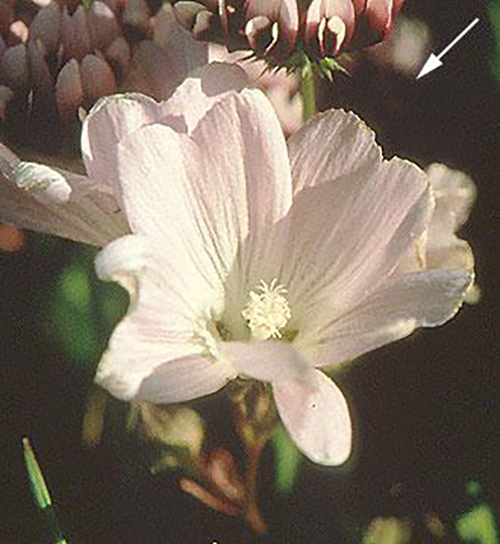Checkerbloom is a member of the mallow family. The flowers are made up of five petals and many stamens. The petals are pale pink to white. Leaves are often rounded or maple leaf-shaped at the bottom of the plant and divided into palmate (hand-shaped) lobes at the top.
There may be more than one species of Checkerbloom at Mather Field. One species blooms early in the season, along with White-tipped Clover (Trifolium variegatum), on the edges of the vernal pools. The plant that blooms later in the season may be a different species.
Scientific name: Sidalcea calycosa
Family: Malvaceae (mallow)
Habitat: Vernal pools, wet grasslands
Size: Plant up to 12 inches tall, flower 1.5 to 2.0 cm across
Fun Facts:
The common name, Checkerbloom, comes from the checkered pattern of veins on the petals.
Life Cycle:
Checkerbloom is an annual plant, so it dies off every year. It blooms in April and early May at Mather Field.
Ecology:
Checkerblooms have large almost nut-like seeds which are highly nutritious. They are an important food source for burrowing rodents and birds.
Most vernal pools do not have Checkerbloom. Only a few of those at Mather Field have Checkerbloom rings.
Investigate:
The Checkerbloom and White-tipped Clover grow together, bloom at the same time, and have similarly colored flowers. Do you think that they may be pollinated by the same insects? When an insect visits a Checkerbloom, what part of the insect’s body would get pollen on it?
